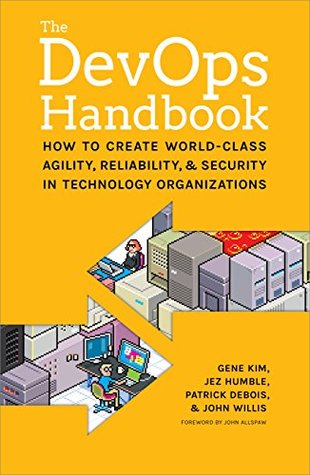More on this book
Community
Kindle Notes & Highlights
by
Gene Kim
Started reading
December 25, 2019
our goal is to keep applications and infrastructure running so that our organization can deliver value to customers. In our daily work, many of our problems are due to applications and infrastructure that are complex, poorly documented, and incredibly fragile. This is the technical debt and daily workarounds that we live with constantly, always promising that we’ll fix the mess when we have a little more time. But that time never comes.
In DevOps, we typically define our technology value stream as the process required to convert a business hypothesis into a technology-enabled service that delivers value to the customer.
Because value is created only when our services are running in production, we must ensure that we are not only delivering fast flow, but that our deployments can also be performed without causing chaos and disruptions such as service outages, service impairments, or security or compliance failures.
The First Way enables fast left-to-right flow of work from Development to Operations to the customer. In order to maximize flow, we need to make work visible, reduce our batch sizes and intervals of work, build in quality by preventing defects from being passed to downstream work centers, and constantly optimize for the global goals.
The Second Way enables the fast and constant flow of feedback from right to left at all stages of our value stream. It requires that we amplify feedback to prevent problems from happening again, or enable faster detection and recovery.
The Third Way enables the creation of a generative, high-trust culture that supports a dynamic, disciplined, and scientific approach to experimentation and risk-taking, facilitating the creation of organizational learning, both from our successes and failures.
Work originates on the left (often being pulled from a backlog), is pulled from work center to work center (represented in columns), and finishes when it reaches the right side of the board, usually in a column labeled “done” or “in production.”
To transmit code through the value stream requires multiple departments to work on a variety of tasks, including functional testing, integration testing, environment creation, server administration, storage administration, networking, load balancing, and information security.
To enable fast feedback in the technology value stream, we must create the equivalent of an Andon cord and the related swarming response. This requires that we also create the culture that makes it safe, and even encouraged, to pull the Andon cord when something goes wrong, whether it is when a production incident occurs or when errors occur earlier in the value stream, such as when someone introduces a change that breaks our continuous build or test processes.
Lean defines two types of customers that we must design for: the external customer (who most likely pays for the service we are delivering) and the internal customer (who receives and processes the work immediately after us). According to Lean, our most important customer is our next step downstream. Optimizing our work for them requires that we have empathy for their problems in order to better identify the design problems that prevent fast and smooth flow.
In the technology value stream, our goal is to create a high-trust culture, reinforcing that we are all lifelong learners who must take risks in our daily work. By applying a scientific approach to both process improvement and product development, we learn from our successes and failures, identifying which ideas don’t work and reinforcing those that do. Moreover, any local learnings are rapidly turned into global improvements, so that new techniques and practices can be used by the entire organization.
We reserve time for the improvement of daily work and to further accelerate and ensure learning. We consistently introduce stress into our systems to force continual improvement. We even simulate and inject failures in our production services under controlled conditions to increase our resilience.
technology value stream, we establish the foundations of a generative culture by striving to create a safe system of work.
“By removing blame, you remove fear; by removing fear, you enable honesty; and honesty enables prevention.”
The leader helps coach the person conducting the experiment with questions that may include: What was your last step and what happened? What did you learn? What is your condition now? What is your next target condition? What obstacle are you working on now? What is your next step? What is your expected outcome? When can we check?
The principles of the Third Way address the need for valuing organizational learning, enabling high trust and boundary-spanning between functions, accepting that failures will always occur in complex systems, and making it acceptable to talk about problems so we can create a safe system of work. It also requires institutionalizing the improvement of daily work, converting local learnings into global learnings that can be used by the entire organization, as well as continually injecting tension into our daily work.


